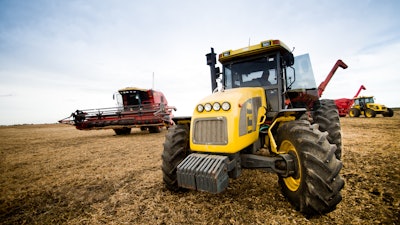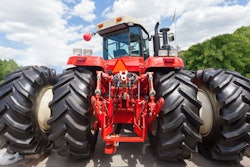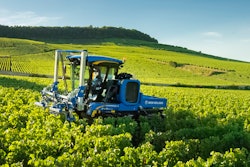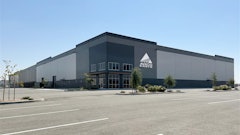
The success (or failure) of any relationship depends on a variety of factors – both great and small. However, in the vast majority of cases, the level of trust that exists between two parties in the relationship often determines its long-term potential and–ultimately–its fate.
Equipment manufacturers today recognize the importance of designing and developing cutting-edge, innovative product offerings meant to meet the ever-changing needs and wants of customers. But, according to a recent Association of Equipment Manufacturers (AEM) research report conducted by Clutch, they aren't always well-equipped to maximize their relationships with those who use the machinery they produce. Why? Because in order to do so, OEMs would have to create a more direct relationship with the consumer, which can be difficult. Therefore, the research found, it's imperative to maximize the relationship with dealers to ensure that relationships with end users are being created on some level.
All that being said, the research also found OEMs stand to gain from a willingness to invest time, effort and resources in optimizing their relationships with equipment end users. More specifically, it indicated:
- Those who can train and communicate with their dealer force – most efficiently and effectively – have an advantage.
- Those who can merge manufacturer-dealer actions and voice are best positioned to develop longer-lasting, deeper relationships .
- Trust (along with patience) are required for success .
- It’s not easy, but making an effort is worth it in the long run .
WHAT OEMS CAN DO
It’s no secret that advancements in technology have greatly impacted what ag equipment is today and—perhaps more importantly—how it’s used by growers. As a result, end users of ag machinery are becoming more aware of, and educated about, what’s available on the market today. So, for those OEMs who are looking to make strides in terms of meeting the demands of the ag market they serve, AEM’s research indicates there are two tasks at hand:
- Make a concerted effort to educate current and prospective customers .
- Maximize relationships with dealers .
When all is said and done, the more manufacturers are connected with their dealers, the better off they will be perceived by growers. While establishing that connection is a task quite simply stated, it’s not one that’s so easily accomplished.
TECHNOLOGY’S IMPACT
There are two notable consequences of the rise of technology in the ag equipment industry today. First, it’s extremely difficult for OEMs to ensure end users and dealers are educated on the technology, its benefits, and how to use it to its fullest capacity. According to a recent AEM survey on ag technology, 57% of equipment end user respondents indicated they possess no “tech champion” in their operation who encourages investment in and adoption of technology. That needs to change, and it starts with OEMs and dealers working to convey the importance of growers educating themselves on the latest technologies and innovations.
What also can't be overlooked is the importance of OEMs understanding exactly what technologies ag equipment end users plan to adopt in the coming years. AEM's survey on ag technology shed some light on how things might play out in the short term.
Second, and perhaps most importantly, technology (sometimes substantially) increases the price of equipment offerings. That’s significant. Generally speaking, ag equipment end users today can be a skeptical bunch. They don’t always trust they’ll get what they pay for in a piece of equipment. And while they’re aware there’s value to be gained in owning that equipment, end users want to know it’ll be worth the price of investment in the long run.
AEM’s survey on ag technology certainly found that to be the case:
- 68% of those surveyed want to make sure new technology works out before they buy it ,
- 10% of respondents are usually among the first to buy new technology .
Ultimately, growers can go about finding reliable and actionable information about technology and how it can help them get the most out of their equipment. It’s up to OEMs (and their dealers) to decide if they want to be the go-to sources of that information. According to the Clutch research, there needs to be an ongoing two-way dialogue between buyers and sellers, and customer satisfaction should be the end goal of these conversations.
THE ROLE OF THE DEALER
It’s impossible to assess the relationship between ag OEMs and equipment end users without considering the impact of dealers. Many growers today value their relationships with dealers, but they also appreciate information and attention from OEMs as well – especially larger manufacturers that produce higher-tech equipment.
Dealers today need to be informed, and they need to remain aware of how agriculture continues to evolve over time. Increased industry consolidation has caused customers to grow in size, and that has changed their expectations of those who manufacture and distribute ag machinery. Most notably, according to the Clutch research, customers are looking for a more customized, personalized experience when evaluating equipment purchases.
When it comes to what they are looking for from OEMs, end users ultimately want two things: relevant information and transparency. Time is money these days. As the volume of crops produced continues to grow over time, all while the window to plant and harvest those crops continues to shrink, it’s critical for OEMs to be effective in their efforts to support farmers’ efforts to secure the greatest possible return on their investment in the equipment they purchase.
WHAT TO EXPECT
As equipment changes, so too will the relationship between OEMs and customers. According to the Clutch research, here’s what the present and future holds regarding the relationship between manufacturers and end users:
- Consolidation and complexity of operations is transforming expectations .
- An ongoing, two-way dialogue will lead to greater customer satisfaction .
- There is an increased desire (and perhaps need) for more direct contact between OEMs and customers .
- The dealer is (and will remain) key .
Can OEMs continue to meet the ever-changing needs and wants of growers? Will they equip themselves with the tools and strategies necessary to maximize their relationships with those who use the machinery they produce? The opportunities are there for equipment manufacturers. As is the case with all relationships, though, it all comes down to how successfully trust is established (and maintained).
This is the third in a series of three articles on the ag OEM-customer relationship, based on findings from a recent AEM research report conducted by Clutch.
The first two articles in the series can be viewed on AEM's website:
The OEM-Customer Relationship in Ag: Where it Stands and Where It's Headed
The Machine Data Disconnect: What Questions of Ownership and Access Mean for the Future of the OEM-Customer Relationship in Ag



















